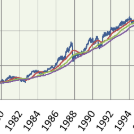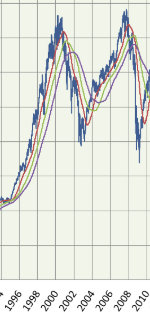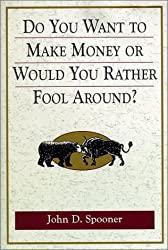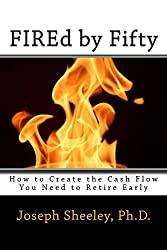Like many of you, I’m hopeful that the rally we’ve seen over the last couple of weeks will hold and we’re on the road to recovery and new highs, maybe before the end of the year. Before we decided to shut everything down overnight and put tens of millions of people out of work, the economy was running on all cylinders. While we had a bull market that had been going for more than 10 years, since the last bear that happened during the mortgage meltdown of 2008, there was nothing about the markets that indicated we were overextended. Prices had gone way up, but there seemed to be good reasons for them to go way up since the economy was doing well and earnings were rising.
The thinking is now that the economy, and the stock market along with it, is still fundamentally healthy. That if the word were given today, the stock market would shoot right back and businesses would be right back where they were within a month or two. It would certainly be good if this is the case, but it may not be. Real damage is being done to the economy right now and it may take years or a decade or more to fully heal. And that’s if we step back and let thigns heal.
Rents aren’t being paid, which means mortgages aren’t being paid, which means banks and lenders aren’t getting the money they need to make new loans and pay interest on savings accounts and CDs. Loans will be needed to restart businesses since those that existed before the economy was closed may not have the cash to buy inventory and rehire workers, let alone pay for all the interest on loans that are building up now. And it isn’t like past rents on the consumer side can instantly be paid once the economy is reopened. The money needed to pay that rent was not made since jobs were cut. People will just barely have enough to pay next month’s rent when they go back to work, assuming they go back to work. They won’t have the money to pay for this month’s rent, so a whole month of rents may just be gone.
(Note, while you’re reading this for free, it is not “free” to put all of this great information together for you. Hundreds of hours, an average of two to three hours per article, have been spent researching and writing these articles for you to use and hopefully better your life. One way that you could pay back and keep me writing more great articles like this one, while getting a lot of great information, is by purchasing one of the books, The SmallIvy Book of Investing or FIREd by Fifty: How to Create the Cash Flow You Need to Retire Early. Reading these books will make you very knowledgeable in money management and investing and give you the secret to reaching financial independence. Buying a book and writing an honest review in Amazon would be even more helpful.
Another way that you can support The Small Investor is to buy something through one of the links on this page, or just by going to Amazon through one of the links and then buying something you were going to buy anyway. This page uses affiliate links, which is a way for you to get all of this great content while paying nothing more than you would otherwise. As an Amazon Associate I earn a small fee, paid by Amazon, from qualifying purchases. When you click on an affiliate link and buy something, The Small Investor will get a small commission for the referral. You are charged nothing extra for the purchase, so you get something you would purchase anyway and The Small Investor gets a few dimes. This helps keep The Small Investor going and free. If you would like to help but don’t see anything you need, feel free to visit Amazon through this link and buy whatever you wish.)
And it may not be that business returns to normal instantly. People may fear eating in full restaurants, going to packed movie theaters and events, or going on a cruise ship with 10,000 other people. People may decide that eating at home is safer and cheaper, and therefore decide to keep eating in. They may decide to not get on crowded airplanes again, deciding that the risk of getting a cold or a flu, which they took as part of taking a trip in the past, is no longer worth it. Large segments of the country that rely on tourist traffic may not just jump right back.
While I’m hoping that this just ends up being a correction, even if it is a sharp and deep one, we could be looking at a full-fledged bear market. The difference is that a correction has one drop and then it recovers and goes on to new highs. The drop could be huge, twenty, thirty, or forty percent or more, but the pain is all over after that and people’s portfolio values start to improve and continue to improve after that. A bear market, on-the-other-hand, involves at least two movements down. You have a big drop, then you have a rally where people start to think that things are OK and rush in to buy, then a second, spirit crushing drop takes the markets to new lows. After a correction, people talk about how bad it was, but how you just need to stick with it. After a bear market, many people swear off investing and never go back again. It’s hard to keep putting in money when you lose half of it or more each time you do.
For example, the huge drop in 1987, where the markets fell about 25% in one day, was a correction. As you can see in the chart for the S&P500 below, after the drop, the markets started to rally and no second dip came. If you were invested back then (like I was), you felt like the world was ending right after the dip. Imagine the Dow Jones going down by 7500 points in one day. But if you held on, you were back where you were within a year.

Contrast that with the 2000-2003 bear market, where the S&P500 for that period is shown in the graph below. Here, there were two rallies in the middle, but each one failed and the markets went to lower lows. Many people saw their investments in dot com stocks get wiped out. People who bought pets.com and Webvan lost everything. It took some real guts to buy into Priceline and Amazon back then, having seen the prices for those stocks drop 90% or more. Many people decided that investing was not for them by 2001. Note that right after the market finally rallied from 2003 to 2008, those who got back in and thought things were great got hit by the housing market collapse and stocks went even lower than they were when the dot com bear ended.
Bear markets also tend to last longer. With a correction, things are normally back within a year. Markets tend to go down a lot faster than they go up, so the pain of a correction is often over in a week or two. After that, it is just a steady recovery that makes you feel good since you see your portfolio growing in value each month. A bear market, because it involves multiple waves down, may last for a year or two. You see a big loss, think that things have turned, but then see another loss. You start to think about how you have the same amount of money you have two or three years before, but you have two or three years less time.


This is my first book, which covers all of the details of how to invest and the risks involved in investing in different types of securities. This is the information you need to know before buying individual stocks or even mutual funds. Even more than that, it tells you what you should be doing at each stage of life to come out financially independent before you retire. Click on the book image above to learn more about it and read an exert on Amazon.
Avoiding the sucker’s rally
If we’re in a correction, we’ve seen the worst of it and it will just get better from here. You’ll be able to scoop up shares at great prices now and in six months to a year you’ll have a great profit and some good stories to tell. The shares that you owned before the fall will once again be worth in a year what they were in February, and the shares you pick up now will be 20 to 50% higher, or maybe even double what they are now. The worst thing you could do if this is a correction is to sit on cash and then invest it after the correction is well underway since you’d both miss out on the big gains right now and maybe buy in just before the next correction or bear market.
But if this is a bear market, this may just be a sucker’s rally and those who buy in now will see their investments crater again. If you rush in to buy, in a month you’ll be wishing that you had the money you invested today since shares will be dirt cheap in comparison. This assumes that you stick with investing and don’t just cash in what you have left at that point. Right now, it is really difficult to say which we’re seeing. You don’t want to miss out on a rally that takes the DJIA back over 30,000, but you don’t want to drop in all of the money you have now and ride it down to 10,000 either. If that happens, it could be 10 years or more before you get back to even, plus you’ll miss out on the chance to really make a big profit during that time by buying after the drop is complete.

Learn to be a better investor by reading J.D. Spooner’s Do You Want to Make Money or Would You Rather Fool Around? This book made me realize that I wasn’t buying enough shares in the companies I was investing in, meaning my wins were no where near as big as they should have been.
Accepting that you just can’t know
The biggest issue with trying to time the markets, which is what you’re doing if you rush in now and buy, thinking this was just a correction, or sit on the sidelines (or sell into this rally and then sit and wait) if this is a bear market, is that it is pretty much impossible to know. Looking back we’ll see where we are now and be able to talk about what should have been done. But right now, it is really impossible to know. Theoretically, everything that the market knows is already priced into stocks right now. The market has already priced in the damage that has been done. It would therefore be safe to buy now since the price you’re paying takes into account the risk involved. But if things happen that the market didn’t predict, we could be in for a nasty fall.
The first thing to do is to accept that you just can’t know what is going to happen over the next week, month, or year. You then setup your strategy based on that reality and act accordingly. You need to take both possible actions by the market and what is best for your psychology given those possible events to keep yourself from doing something stupid. Accept that you do not and cannot know what the market will do, that the market could go 50% higher or 50% lower over the next year.
But you also know that over long periods of time, like ten or twenty years, markets go higher. You know that there is a positive trend in the price of stocks in general, meaning that each time you buy it is more likely that the price will be higher in the future than it is when you buy. If you put all of your money in at one time, you are as likely to have more money in a month than you are to have less money. It is possible that stocks will drop significantly in the second leg of a bear market and your position will be underwater for the next five to ten years. It is very unlikely, however, that it will be worth less than today after ten years.
Before you can start investing, you need money to invest. Please check out my latest book, FIREd by Fifty: How to Create the Cash Flow You Need to Retire Early

Think about psychology
You also need to think about your psychology, because it is your psychology that will cause you to make big mistakes. When the market is rallying, your psychology will cause you to rush in and buy since you don’t want to miss out. When the market is falling, however, you’ll want to sell because you’re afraid that it will just keep on falling. This is why people in general buy near tops and sell near bottoms. Everything looks great when the market is rallying, and everything looks terrible when the market is cratering. It is only afterwards when you can look back and see what happened that you’ll realize that you were buying and selling at exactly the wrong times.
Realize that you’ll feel a lot more relaxed if you have money to put in if the market falls. You’ll also feel better if you have a plan that you can stick with than you will if you just let yourself react to what the markets do. Being relaxed will allow you to make good decisions.
Just starting out? Keep buying
If you’re in the stage of life where you’re just starting to build a portfolio, the amounts that you’re putting in from your paycheck will dwarf the balances in your account. For example, if you’re investing $3000 per year and only have $5000 in the markets right now, if the market drops by half it means you’ll be able to double the number of shares you have over the next year. When the market comes back, you’ll be making twice as much.
If this is where you are, you should just stick to your plan and keep buying regularly. Accept that your portfolio may be cut in half or more if this is a sucker’s rally, but a real rally will eventually come and when it does you’ll both make back all of the money you’ve lost from your original positions and make extremely high returns on the money you’re investing now. Everything is on sale. If you can, increase how much money you’re investing each month and take advantage of the low prices.
Have a big portfolio, hedge your bets
If you already have a big portfolio, like $1M in stocks, but still have twenty years until you’ll need the money, it might be good psychologically to take a little money off of the table. If you’re investing in a taxable account, you might sell some positions that have lost money, along with some shares of your long-term gains, since you can then take some of your profits without paying capital gains taxes on them. Maybe you raise $100,000 in cash this way.
Then, you start bargain hunting, finding things that are way down from where they were and where they probably should be. Buy things that no one wants right now, getting the kind of prices that will allow for things like 90% gains when people realize things aren’t as bad as they thought and the industries come back. Look at places like retailers, hotels, travel, and oil stocks. Buy here and there, keeping cash to allow you to buy more if the whole market falls again. Just having that small amount of cash can keep you from doing something dumb like going all-into cash if the market sinks again.
Need the money? Take out what you need
If you’re using the money from your portfolio for living expenses, use the rally to take out what you’ll need over the next five years or so and keep it in cash. This will allow you to let the rest of your investments ride without worrying about them since you’ll know that you have the cash you need to get by until things recover, regardless of what happens. Take advantage of rallies to raise more cash as the years go by, always keeping that needed cash cushion. This should always be what you do, regardless of what the markets are doing, since you never know what will happen over a five-year period. Even if markets don’t take a big dive, you might make more money in a CD than you will in the markets over short periods of time.
Have a burning investing question you’d like answered? Please send to[email protected] or leave in a comment.
Follow on Twitter to get news about new articles. @SmallIvy_SI
Disclaimer: This blog is not meant to give financial planning or tax advice. It gives general information on investment strategy, picking stocks, and generally managing money to build wealth. It is not a solicitation to buy or sell stocks or any security. Financial planning advice should be sought from a certified financial planner, which the author is not. Tax advice should be sought from a CPA. All investments involve risk and the reader as urged to consider risks carefully and seek the advice of experts if needed before investing.
